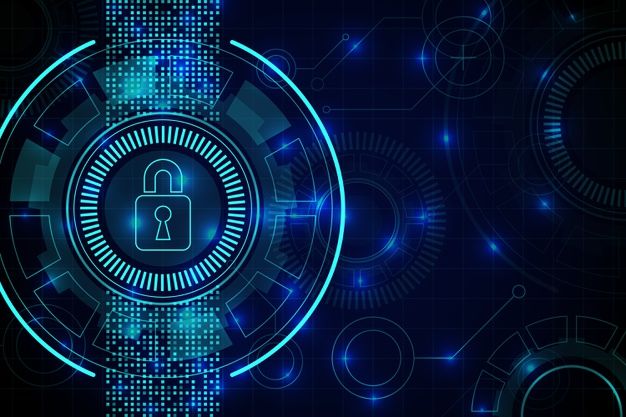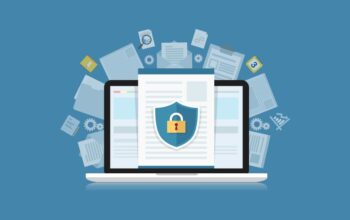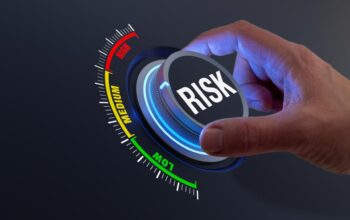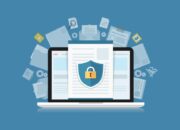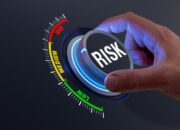In an increasingly interconnected yet unpredictable world, the pursuit of secure living has become a paramount concern for individuals, families, and businesses alike. From safeguarding digital identities to protecting physical assets and ensuring financial stability, the landscape of threats and protective measures is constantly evolving. What constitutes “security” today extends far beyond traditional locks and alarms; it encompasses a holistic approach to risk mitigation, leveraging cutting-edge technology, smart strategies, and a proactive mindset. This article delves deep into the multifaceted dimensions of modern secure living, exploring the contemporary challenges, the latest technological advancements in protection, the evolving strategies for personal and asset defense, and the future trends shaping how we safeguard our lives in an uncertain era.
The Evolving Landscape of Threats
The concept of security has undergone a dramatic transformation in recent decades, driven by technological progress, global connectivity, and shifting societal norms. The threats we face today are more diverse, sophisticated, and often less tangible than ever before. Understanding this evolving threat landscape is the first step towards effective secure living.
A. Digital Dangers
The digital realm, while offering unparalleled convenience and connection, has simultaneously opened new frontiers for malicious actors.
- Cybercrime Proliferation: This encompasses a vast array of illegal activities conducted via computers or the internet.
- Phishing and Social Engineering: Increasingly sophisticated scams designed to trick individuals into revealing sensitive information (passwords, financial details) through fake emails, texts, or websites.
- Ransomware Attacks: Malware that encrypts a victim’s files, demanding a ransom payment (often in cryptocurrency) for their release. These attacks can target individuals, businesses, or even critical infrastructure.
- Data Breaches: Unauthorized access to and exfiltration of sensitive data from databases, cloud storage, or personal devices, leading to identity theft, financial fraud, or reputational damage.
- Malware and Viruses: Malicious software designed to disrupt computer operations, steal data, or gain unauthorized access to systems.
- Identity Theft and Financial Fraud: With more personal information stored online, the risk of identity theft has skyrocketed. This includes the fraudulent use of an individual’s personal information (Social Security numbers, bank accounts, credit cards) to open new accounts, make unauthorized purchases, or file false tax returns.
- Privacy Erosion: The pervasive collection of personal data by companies and governments, often for targeted advertising or surveillance, raises significant privacy concerns. This includes tracking online behavior, location data, and even biometric information.
- IoT Vulnerabilities: The growing ecosystem of “Internet of Things” devices (smart home appliances, wearables, connected cars) introduces new attack vectors. Many IoT devices have weak security protocols, making them susceptible to hacking and potential exploitation.
B. Physical Security Challenges
While digital threats are prominent, traditional physical security concerns remain vital and have often evolved with new technologies.
- Property Crime: Burglary, theft, and vandalism continue to pose significant risks to homes and businesses. Organized crime rings are becoming more sophisticated in targeting properties.
- Personal Safety: Threats to personal safety include assault, robbery, and kidnapping. While crime rates fluctuate, the psychological impact of perceived insecurity remains high.
- Vehicle Theft: Modern vehicles, despite advanced anti-theft systems, are still targets for sophisticated thieves using electronic bypass tools or traditional methods.
- Workplace Violence: Unfortunately, workplaces can be vulnerable to acts of violence, necessitating robust security protocols and emergency preparedness.
- Natural Disasters and Environmental Risks: Beyond human threats, the increasing frequency and intensity of natural disasters (floods, wildfires, extreme weather) pose direct physical threats to life and property, demanding robust preparedness and resilience.
C. Financial Instability
Beyond direct theft, broader financial risks can severely impact secure living.
- Economic Volatility: Global economic shifts, inflation, and market downturns can erode savings and investments, threatening financial security.
- Healthcare Costs: Rising healthcare expenses, even with insurance, can be a major financial burden, especially in the event of unexpected illness or injury.
- Job Insecurity: Economic shifts, automation, and global competition can lead to job losses, impacting income stability.
- Investment Risks: Navigating complex investment landscapes requires vigilance to protect assets from scams or poor performance.
Technological Advancements in Modern Protection
The good news is that technology, while creating new vulnerabilities, is also providing increasingly sophisticated tools for enhanced security across all domains.
A. Cybersecurity Innovations
The front line of defense in the digital age relies heavily on advanced cybersecurity measures.
- Artificial Intelligence (AI) and Machine Learning (ML) in Threat Detection:
- Predictive Analytics: AI/ML algorithms analyze vast datasets of network traffic and user behavior to identify anomalies and predict potential cyberattacks before they fully materialize. They learn from past attacks to recognize new threats.
- Automated Response: AI can automate responses to detected threats, such as isolating compromised systems or blocking malicious IP addresses, significantly reducing response times.
- Behavioral Biometrics: Analyzing unique user behaviors (typing patterns, mouse movements) to verify identity, providing an additional layer of security beyond traditional passwords.
- Multi-Factor Authentication (MFA) and Passwordless Solutions:
- MFA: Requiring two or more verification factors (e.g., something you know like a password, something you have like a phone, something you are like a fingerprint) significantly reduces the risk of unauthorized access. It’s becoming the standard for sensitive accounts.
- Passwordless Authentication: Emerging technologies like FIDO (Fast IDentity Online) standards and biometric logins (fingerprint, facial recognition, iris scans) are paving the way for a future where traditional passwords may become obsolete, offering both convenience and enhanced security.
- Zero-Trust Security Models: Shifting away from the traditional “trust but verify” approach, Zero Trust assumes that no user, device, or network can be inherently trusted, regardless of their location. Every access attempt is rigorously verified before granting permission, minimizing the attack surface.
- Blockchain for Security and Privacy:
- Immutable Records: Blockchain’s distributed ledger technology can create tamper-proof records for supply chain tracking, identity verification, and secure data sharing, reducing fraud and enhancing transparency.
- Decentralized Identity: Emerging concepts of “self-sovereign identity” leveraging blockchain allow individuals to control their own digital identities, rather than relying on centralized authorities.
- Enhanced Encryption Standards: Continuous development of stronger encryption algorithms (e.g., post-quantum cryptography) to protect data both in transit and at rest, guarding against increasingly powerful computational attacks.
B. Smart Physical Security Systems
Physical security has moved far beyond simple locks, integrating smart technology for enhanced monitoring and control.
- Integrated Smart Home Security Systems:
- Connected Devices: Centralized control hubs link smart locks, door/window sensors, motion detectors, glass-break sensors, and smoke/carbon monoxide detectors.
- Remote Monitoring and Control: Homeowners can monitor their properties via smartphone apps, receive real-time alerts, and remotely arm/disarm systems, lock/unlock doors, or view live camera feeds.
- Environmental Sensors: Integration with water leak detectors, temperature sensors, and power outage alerts can protect against environmental damage.
- Advanced Surveillance and AI-Powered Cameras:
- High-Resolution Cameras: Offering clearer images and better zoom capabilities.
- AI-Powered Analytics: Cameras can now perform advanced functions like facial recognition (for authorized personnel), object detection (distinguishing pets from intruders), perimeter breach detection, and even suspicious behavior analysis, reducing false alarms and improving situational awareness.
- Thermal Imaging: Cameras that can detect heat signatures, effective in darkness or adverse weather conditions.
- Biometric Access Control:
- Fingerprint and Facial Recognition Locks: Replacing traditional keys or keypads with biometric authentication for entry, offering enhanced security and convenience.
- Iris and Voice Recognition: Advanced biometric methods gaining traction for high-security environments.
- Drone Surveillance and Robotic Security: For larger properties or commercial sites, autonomous drones and ground robots equipped with cameras and sensors are being deployed for perimeter patrol, intrusion detection, and incident response.
C. Financial Protection Technologies
Innovative tools are helping individuals and businesses better manage financial risks.
- AI in Fraud Detection: Banks and financial institutions use AI to analyze transaction patterns in real-time, identifying and flagging fraudulent activities much faster than traditional methods.
- Personal Finance Management Apps: These apps often integrate budgeting, expense tracking, investment monitoring, and sometimes even credit score tracking, empowering users with greater control and visibility over their financial health.
- Secure Payment Gateways: Advanced encryption and tokenization technologies protect online transactions, making digital payments safer.
- Blockchain for Secure Transactions and Asset Management: As mentioned, blockchain’s immutable ledger can secure transactions and verify ownership of digital assets, reducing the risk of fraud.
Evolving Strategies for Comprehensive Secure Living
Technology alone is not enough; a holistic approach to secure living requires evolving strategies that combine technological tools with proactive planning and informed decision-making.
A. Digital Hygiene and Best Practices
Personal responsibility plays a crucial role in digital security.
- Strong, Unique Passwords and Password Managers: Using complex, unique passwords for every online account and leveraging a reputable password manager to store and generate them is fundamental.
- Regular Software Updates: Keeping operating systems, applications, and antivirus software updated patches vulnerabilities that attackers exploit.
- Awareness of Phishing and Social Engineering: Learning to recognize the red flags of phishing emails, suspicious links, and social engineering tactics is vital. “Think before you click” remains a golden rule.
- Backup Data Regularly: Implementing a robust backup strategy (e.g., 3-2-1 rule: three copies of data, on two different media, one off-site) protects against data loss due to cyberattacks, hardware failure, or accidents.
- Review Privacy Settings: Regularly auditing privacy settings on social media, apps, and online services to control what data is collected and shared.
- Secure Wi-Fi Networks: Using strong passwords for home Wi-Fi and enabling WPA3 encryption where available. Avoiding public Wi-Fi for sensitive transactions.
B. Physical Security Planning
Proactive planning for physical safety and property protection.
- Layered Security Approach: Implementing multiple layers of security, from strong doors and windows to alarm systems, surveillance, and lighting, creates multiple deterrents.
- Neighborhood Watch Programs: Community involvement can significantly enhance local security by fostering vigilance and cooperation among residents.
- Emergency Preparedness Kits and Plans: Having an emergency kit (food, water, first aid) and a family emergency plan for natural disasters or other crises is essential. This includes designating meeting points and communication strategies.
- Situational Awareness: Being mindful of surroundings, especially in unfamiliar or high-risk areas, and trusting instincts can prevent personal safety incidents.
- Vehicle Security Habits: Always locking doors, not leaving valuables in plain sight, parking in well-lit areas, and utilizing advanced vehicle security features.
C. Financial Resilience Building
Securing one’s financial future against various risks.
- Emergency Fund Creation: Building a robust emergency fund (3-6 months of living expenses) provides a crucial buffer against unexpected job loss, medical emergencies, or other financial shocks.
- Diversified Investments: Spreading investments across different asset classes reduces risk and protects against volatility in any single market segment.
- Adequate Insurance Coverage: Reviewing and updating insurance policies (health, life, home, auto, disability) to ensure they adequately cover potential risks and expenses.
- Debt Management: Proactively managing and reducing high-interest debt frees up financial resources and reduces vulnerability.
- Estate Planning: Creating wills, trusts, and power of attorney ensures that assets are protected and distributed according to one’s wishes, providing security for future generations.
- Professional Financial Advice: Consulting with certified financial planners for personalized strategies and guidance can significantly enhance long-term financial security.
The Future of Secure Living: Emerging Trends
The journey towards secure living is continuous, with several exciting and challenging trends shaping its future.
A. Hyper-Personalized Security
Security solutions will become increasingly tailored to individual needs and behaviors, moving beyond one-size-fits-all approaches.
- Adaptive Security Systems: Systems that learn user habits and environmental factors (e.g., time of day, location) to dynamically adjust security levels or detect unusual behavior more effectively.
- Biometric Identity Wallets: Secure digital vaults for personal biometric data that allow for seamless, highly secure authentication across various platforms and physical access points, with the user having full control.
- Contextual Security: Security measures that adapt based on the context of the user (e.g., device used, network connected to, location, specific task being performed).
B. Quantum-Resistant Security
The advent of quantum computing poses a theoretical threat to current encryption methods. Research and development are actively underway for post-quantum cryptography (PQC), which aims to create encryption algorithms that can withstand attacks from future quantum computers. Implementing these will be a critical step for long-term data security.
C. Decentralized Security and Web3 Integration
Building on blockchain principles, Web3 aims to create a decentralized internet where users have greater control over their data and identity.
- Self-Sovereign Identity: Individuals truly own and control their digital identities, granting access to specific data points without relying on central authorities.
- Decentralized Autonomous Organizations (DAOs): New organizational structures that could offer more transparent and secure ways to manage shared resources or communities.
- Enhanced Data Privacy: Technologies like Zero-Knowledge Proofs (ZKPs) allow verification of information without revealing the underlying data, offering unprecedented levels of privacy in digital interactions.
D. Cyber-Physical Convergence and AI-Powered Defense
The lines between cybersecurity and physical security are blurring, leading to integrated “cyber-physical” security systems.
- Unified Threat Management: Single platforms managing both digital network security and physical access control, surveillance, and IoT device security.
- AI-Driven Anomaly Detection: AI systems capable of detecting unusual patterns that cross physical and digital boundaries, such as a security camera detecting an unauthorized presence while a network simultaneously logs unusual access attempts from that location.
- Predictive Risk Analysis: AI analyzing vast datasets (weather patterns, social media trends, crime statistics, digital threat intelligence) to predict localized security risks and issue proactive warnings.
E. Resilient Infrastructure and Disaster Preparedness 2.0
As climate change intensifies, the focus on building resilience against natural disasters will evolve.
- Smart Grid Security: Protecting critical energy infrastructure from cyberattacks and physical disruptions.
- Early Warning Systems: More sophisticated and localized early warning systems for natural disasters, leveraging AI, IoT, and satellite technology.
- Community-Based Resilience: Empowering communities with tools and knowledge to build self-sufficiency and rapid response capabilities in the face of emergencies.
- Insurance Innovation: New insurance products and models that leverage real-time data and AI to offer more dynamic, personalized coverage and proactive risk mitigation advice.
Conclusion
Secure living in the 21st century is not a static state but a dynamic, continuous pursuit. As the world becomes more interconnected and complex, the threats to our digital identities, physical assets, and financial well-being grow in sophistication. However, the remarkable advancements in materials science, artificial intelligence, blockchain, and smart systems are simultaneously providing unprecedented tools for protection and resilience.
Achieving true secure living requires a proactive, multi-layered approach that combines cutting-edge technology with vigilant personal practices, robust financial planning, and a strong sense of community. It demands continuous learning, adaptability, and an understanding that security is a shared responsibility. By embracing the latest updates in protective measures and fostering a culture of preparedness, individuals, families, and businesses can navigate the uncertainties of the modern world with greater confidence and peace of mind. The future of secure living promises to be highly personalized, technologically integrated, and increasingly resilient, enabling us all to safeguard our well-being in an ever-evolving landscape.

